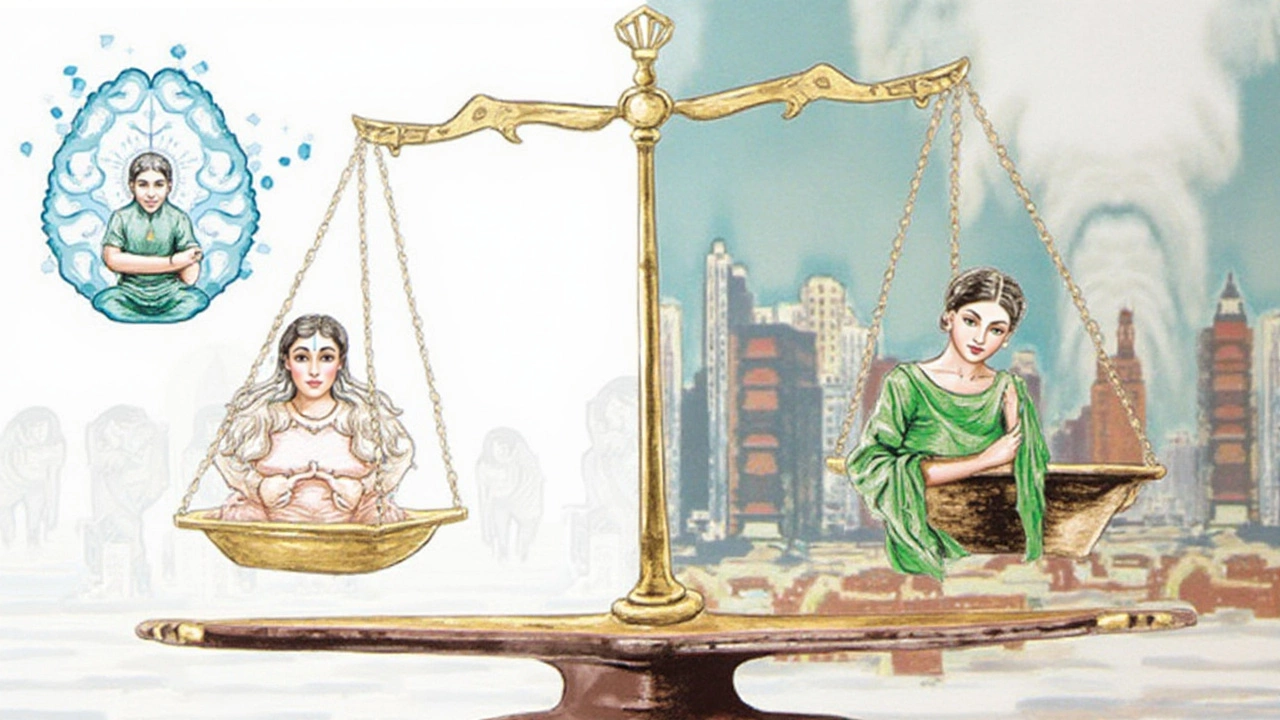Trazodone is a medication that often finds itself surrounded by a cloud of misunderstandings, particularly regarding its classification. Some folks might mistakenly lump it into the category of narcotics due to its role in managing certain conditions. But does it truly belong there?
To make sense of this, you need to draw a clear line between what trazodone is scientifically intended to do and what narcotics, in the strictest sense, are known for. While trazodone is frequently prescribed to treat mood disorders, it's not just about lifting spirits – there's a well-rounded set of functions under its belt.
Let's dive into the depths of what trazodone really is, the purpose it serves, and where exactly it stands in the legal world. By the end, you'll have a solid grasp of its place in the pharmaceutical field, separated from those often misconstrued labels.
- Understanding Trazodone
- Trazodone as a Medication
- Narcotics: A Quick Overview
- Legal Classification of Trazodone
- Potential Misconceptions and Myths
- Considerations and Advice for Trazodone Users
Understanding Trazodone
Trazodone might sound unfamiliar at first, but its history and purpose are notable in the world of medicine. It was initially developed in the 1960s in Italy and introduced as an antidepressant with sedative properties. This medication belongs to a class known as serotonin modulators and acts uniquely by increasing the availability of serotonin in the brain, which is akin to giving a gentle nudge to the neurotransmitters responsible for mood and well-being.
The primary appeal of trazodone lies in its dual action. Not only does it help in relieving the symptoms of depression, but it also aids in sleep. For people struggling with insomnia, often a companion of anxiety and depression, this aspect makes trazodone a compelling choice. Unlike more traditional sleep aids, trazodone does not normally carry the risk of dependency, making it a go-to option for healthcare providers dealing with patients who need a sleep solution without the narcotic baggage.
The Mechanism Behind Trazodone
How trazodone works on a molecular level sets it apart. It does not cause the euphoria or the sense of 'high' that narcotics usually produce, but rather stabilizes mood by blocking serotonin reuptake. This stabilization helps manage irritation, agitation, and even panic attacks. In its resolving ways, trazodone provides relief from not just one, but multiple facets of mental disturbances, aligning closely with our focus of understanding mental health comprehensively."Trazodone is a versatile medication that finds its niche in addressing a special axis of mood disorders and sleep disturbances without crossing into the territory of dependence," said Dr. Michael D. Chafetz, a clinical psychologist. "It's often an underappreciated part of the treatment puzzle," he emphasized.
In terms of popularity, trazodone quickly ascended the ranks, owing to its versatility and non-addictive nature. While no medication is free from side effects, common ones associated with trazodone include dizziness, daytime sleepiness, and sometimes dry mouth. Understanding these can ensure that people using trazodone remain vigilant and attuned to how the medication interacts with their daily lives.
According to statistics, approximately 13% of adults have used a prescribed medication for mental health at some point, highlighting a widespread reliance on pharmaceuticals in dealing with psychological wellness. Trazodone stands as an integral player in this landscape, simultaneously calming the storm and resetting the internal clocks of those seeking balance in their mental health journey.
Trazodone as a Medication
When you hear about trazodone, it's often in the context of a solution for mood disorders or as an aid in battling insomnia. Born in Italy in the 1960s under the watchful eye of scientists looking for a gentler antidepressant, it soon found favor in the medical community. Unlike many medications in its class that bore unwanted side effects, trazodone seemed like the kinder, gentler alternative. Doctors particularly appreciate its dual role – controlling the serotonin levels in the brain, which can elevate one’s mood, and its sedative properties that help improve sleep patterns. Such versatility means it isn't confined to assisting with just depression; people dealing with anxiety and chronic pain might find relief in it too.
Its use doesn't just stop at mental health, though. Trazodone dives into the complex web of brain chemistry by binding to serotonin receptors, thereby preventing their reuptake, allowing the ‘happy hormone’ to linger a bit longer in the system. This is called serotonin modulation, and for those facing the abyss of depressive episodes, it can be a lifeline. Doctors often highlight that unlike typical sedatives, using trazodone doesn’t impede with normal sleep architecture, making the rest more rejuvenating.
"Trazodone has become a stalwart not just in treating depression, but it's making significant inroads in tackling insomnia as well," notes Dr. Smith of the American Psychiatric Association.
Given its bite-sized dosing flexibility, trazodone’s appeal is those struggling with side effects from other antidepressants. Here, patients might have the option of starting at small doses – sometimes as low as 25mg – and gradually increasing as needed. But it's crucial to adhere to professional guidance with this approach for both safety and optimal efficacy. An improper increment could mean not inviting the desired change, worse yet, risking side effects.
However, like all good things, trazodone must be embraced with caution. Side effects, while often mild, like headaches, dizziness, or dry mouth, have been noted. More serious concerns such as serotonin syndrome, a rare but potentially life-threatening condition, can occur if combined with other medications affecting serotonin levels. Thus, users often need guidance, sometimes akin to dance steps, balancing when and how much to administer, akin to its complex choreography in the realm of pharmacology.
For those embarking on this medicinal journey, a significant spotlight falls on the necessity of consultation. Doctors typically recommend regular check-ins, allowing any adjustments needed for the dosage. Such diligence is an ally in navigating potential pitfalls while ensuring that the blend of mood stabilization and better sleep is achieved. Always remember, while trazodone can open the door to improved mental health, it’s the steady hand of a healthcare provider that keeps the journey smooth.

Narcotics: A Quick Overview
Navigating the world of narcotics can feel like stepping into a puzzling realm of medical jargon and regulatory complexity. The term 'narcotic' often conjures vivid images of controlled substances known for their pain-relieving properties but also their potential for misuse and addiction. Generally speaking, narcotics are primarily used in medicine to relieve acute and chronic pain, linking back to their origin from opium. This alkaloid substance hunched their historical walk towards relieving suffering but also sparked an ongoing challenge with dependency.
What's intriguing is that not all medications often thought to have deep ties to narcotics are actually part of that family. Here's where understanding key distinctions becomes pivotal. Narcotics are typically classified under a legal framework, concerned heavily with the Controlled Substances Act in the United States, which enables clear identification and regulation of these drugs. This act categorizes substances based on their potential for abuse and their acceptable medical use. Narcotics, like morphine and oxycodone, belong to a tight group that demands careful monitoring for both their efficacy in pain management and their risks in terms of addiction.
Statistics concerning narcotic use often paint a stark picture of modern medical and societal challenges. For instance, in the last decade, there has been no shortage of reporting on the opioid crisis, which has shown how the strengths of these drugs can double as their most dangerous weaknesses. According to CDC data, tens of thousands of opioid-related deaths have cast a long shadow over the healthcare landscape. What can be gleaned from this is a dual need for vigilant regulation and the humane necessity of pain relief. In recent years, an emphasis has been placed on finding a balance between these essential elements.
Amid all this complexity, it's worth noting how some individuals might mistakenly label non-narcotic medications, such as trazodone, as narcotics. This error is understandable given the intricacies surrounding drug classifications and the everyday language used in communities and media. Statements from prominent healthcare organizations have aimed to untangle this confusion. The American Medical Association once stated,
'Understanding a drug's true classification aids in refining perspectives on what constitutes safe and effective medicine.'This kind of guidance aids not only healthcare professionals but also everyday individuals who strive for clarity in a sea of conflicting information.
Legal Classification of Trazodone
When diving into the legal waters concerning trazodone, it's crucial to understand how medications are categorized. Trazodone is not classified as a narcotic. Rather, it belongs to a group of drugs known as antidepressants. In particular, it's categorized as a serotonin antagonist and reuptake inhibitor (SARI). This classification highlights its primary function, which centers around modulating the chemical messenger serotonin in the brain. By adjusting serotonin levels, trazodone aids in managing mood disorders, distinguishing itself from the characteristics typically linked with narcotics, which are primarily used for pain relief and have potential for dependency.
The legal classification of medications is often defined by bodies such as the Drug Enforcement Administration (DEA) in the United States. The DEA has a scheduling system that spans from Schedule I, indicating substances with a high potential for abuse and no accepted medical use, to Schedule V, which covers substances with the lowest potential for abuse. Trazodone is not listed under any of these schedules, indicating it is considered to have a low potential for misuse compared to narcotics. This classification can often alleviate concerns for individuals who are wary of medications with higher risk profiles.
Interestingly,
The World Health Organization (WHO) has identified trazodone as an essential medicine, which underscores its significance in treating depression and insomnia symptoms without being constrained by stringent legal restrictions.This coveted status further supports its recognized safety and effectiveness in medical use. It also sheds light on the importance of trazodone for global health, particularly in situations where resources and access to diverse treatments can be limited. The legal ease of prescribing trazodone, without the red tape often surrounding controlled substances, offers more opportunities for those in need to receive appropriate care.
In terms of its distribution, because trazodone is not a controlled substance, pharmacies are not subject to the same rigorous regulations that apply to narcotics. This lack of scheduling allows for a more streamlined dispensing process. Physicians can prescribe it without the additional record-keeping and prescription limitations tied to substances that are legally considered narcotic. Such flexibility can be a key factor for doctors choosing the most suitable treatment for their patients, especially when tailoring approaches to individual cases where multiple factors must be considered.
Nevertheless, just because trazodone isn't a narcotic doesn’t imply that it’s free of precautions. As with any medication, its use must be balanced carefully, respecting its known side effects and interactions. Patients should always discuss potential risks with their healthcare providers and adhere strictly to prescribed doses. The legal classification should never overshadow the need for responsible usage, which is imperative for maximizing positive outcomes. By understanding how trazodone is legally viewed both domestically and globally, users can be more informed and confident in its application, contributing to a broader acceptance and mindful utilization of this impactful medication.

Potential Misconceptions and Myths
Many myths circulate about trazodone, largely due to its multifaceted uses and its sometimes misunderstood identity. A significant misconception is that trazodone is a narcotic, which can lead individuals to associate it with the potential for misuse or legal restrictions typical of controlled substances. Let's set the record straight. Unlike narcotics, which primarily act on the central nervous system to relieve pain or alter mood in a rapid manner, trazodone is specifically an antidepressant with a different mechanism of action. It primarily functions by balancing neurotransmitters in the brain, enhancing mood gradually rather than delivering an immediate euphoric effect typical of opioids.
Misunderstandings can easily arise from hearsay and the complexity of medical terminology. For instance, the notion that trazodone has a high abuse potential stems from its sedative properties, often prescribed to alleviate insomnia alongside depression treatment. In fact, this sedative quality might contribute to confusion, as those unfamiliar with pharmacology might see any sedative effect as akin to narcotic impact. To add perspective, Dr. Robert Wilcox, a psychiatrist specializing in mood disorders, notes,
"Trazodone is often misunderstood because it serves dual purposes, acting both as an antidepressant and a sleep aid, which can cause people to mistakenly categorize it alongside substances that are habit-forming."Such dual nature doesn't imply abuse potential but rather a therapeutic flexibility, adjusting to different patient needs.
There is also the myth that once you start using trazodone, you're bound to it indefinitely, much like addiction stories commonly associated with narcotics. The truth is that trazodone is not addictive, and when used as prescribed, it can be adjusted or discontinued under a doctor’s supervision without the withdrawal symptoms linked to narcotics. This makes trazodone a viable option for users who can maintain transparency with their healthcare provider about their experiences and concerns.
Another misconception is that trazodone causes similar side effects to narcotics, yet its profile is generally more benign, focusing on potential drowsiness, dizziness, or dry mouth, rather than severe respiratory depression or high addiction risk associated with narcotics. For those seeking a comprehensive understanding, it's beneficial to contrast its legal status: trazodone is not classified as a controlled substance, which differentiates it significantly from opioid narcotics legally and medically.
Finally, understanding the benefits versus the risks is always crucial. Many of these myths and misconceptions arise from inadequate understanding or from anecdotes shared without clinical backing. A deeper dive into factual knowledge can empower individuals to make informed decisions about their health treatments, separating myths from reality with clarity and confidence.
Considerations and Advice for Trazodone Users
When thinking about starting a medication like trazodone, it's crucial to consider several factors that could impact your health and daily life. First and foremost, consulting a healthcare provider is invaluable. Trazodone is primarily an antidepressant, often utilized to manage depression and anxiety symptoms. However, it's not uncommon for doctors to prescribe it for sleep disorders due to its sedative effects. While trazodone is generally well-tolerated, it can occasionally lead to side effects or interact unfavorably with other medications. To mitigate risks, complete transparency with your healthcare provider regarding your medical history and current prescriptions is essential. This way, they can guide you effectively, adjusting dosage or recommending alternatives if necessary.
Another critical aspect to ponder is the possible side effects. Common ones may include dizziness, drowsiness, or even blurred vision. Although these are generally mild, they can still interfere with daily activities, especially tasks like driving or operating machinery. More severe, though less frequent, side effects could encompass irregular heartbeat or persistent headaches. It's essential to monitor your body's response to trazodone initially and report any troubling symptoms to your healthcare provider immediately. Sometimes, patience is required as your body adapts to the medication, but when something feels distinctly off, it's wise to seek professional advice.
There's also the issue of adherence. Keeping a fixed schedule with trazodone is critical to its effectiveness. Inconsistent intake or abrupt cessation can create a rollercoaster effect with your symptoms, potentially exacerbating conditions instead of alleviating them. One method of maintaining consistency is by setting reminders or associating taking your medication with a daily routine element, like brushing your teeth before bed. This discipline can fortify your mental health regimen, making it easier to track how trazodone is or isn't helping over time. It also provides a clear picture for your healthcare provider, allowing them to make precise adjustments as needed.
Some users wonder about lifestyle changes and whether adjustments are necessary while on trazodone. A holistic approach, encompassing suitable nutrition and regular exercise, can optimize the drug's positive effects. Maintaining a balanced diet helps ensure your body is in the best state to process medication, while exercise offers natural mood-lifting benefits. Yet, avoid assuming that trazodone does all the work. Its effectiveness is maximized when you actively engage in self-care, nurturing both physical and mental health. Sometimes, it helps to track how lifestyle changes interact with trazodone, giving you and your healthcare provider insightful data to inform decisions.
Pondering alternative or supplementary treatments is another worthwhile avenue. For some, trazodone provides significant relief, while others might seek additional therapies like cognitive-behavioral therapy to tackle root issues contributing to their condition. Remember, trazodone is not a catch-all solution, but rather part of a broader strategy aimed at improving your well-being. Pairing medication with therapy or support groups can produce a more comprehensive shield against the challenges you face. Arming yourself with both medication and personalized mental health strategies can significantly elevate your quality of life.
A quote from a reputable source underscores the importance of a careful, informed approach:
"The journey with medications like trazodone requires patience and collaboration between patient and healthcare provider, ensuring each individual's path to wellness is unique and well-supported," shares Dr. Meredith Smith, a specialist in psychopharmacology.This perspective highlights that finding the right balance with trazodone involves more than simply following instructions—it's about crafting a personal strategy aided by expert knowledge and compassionate care.





